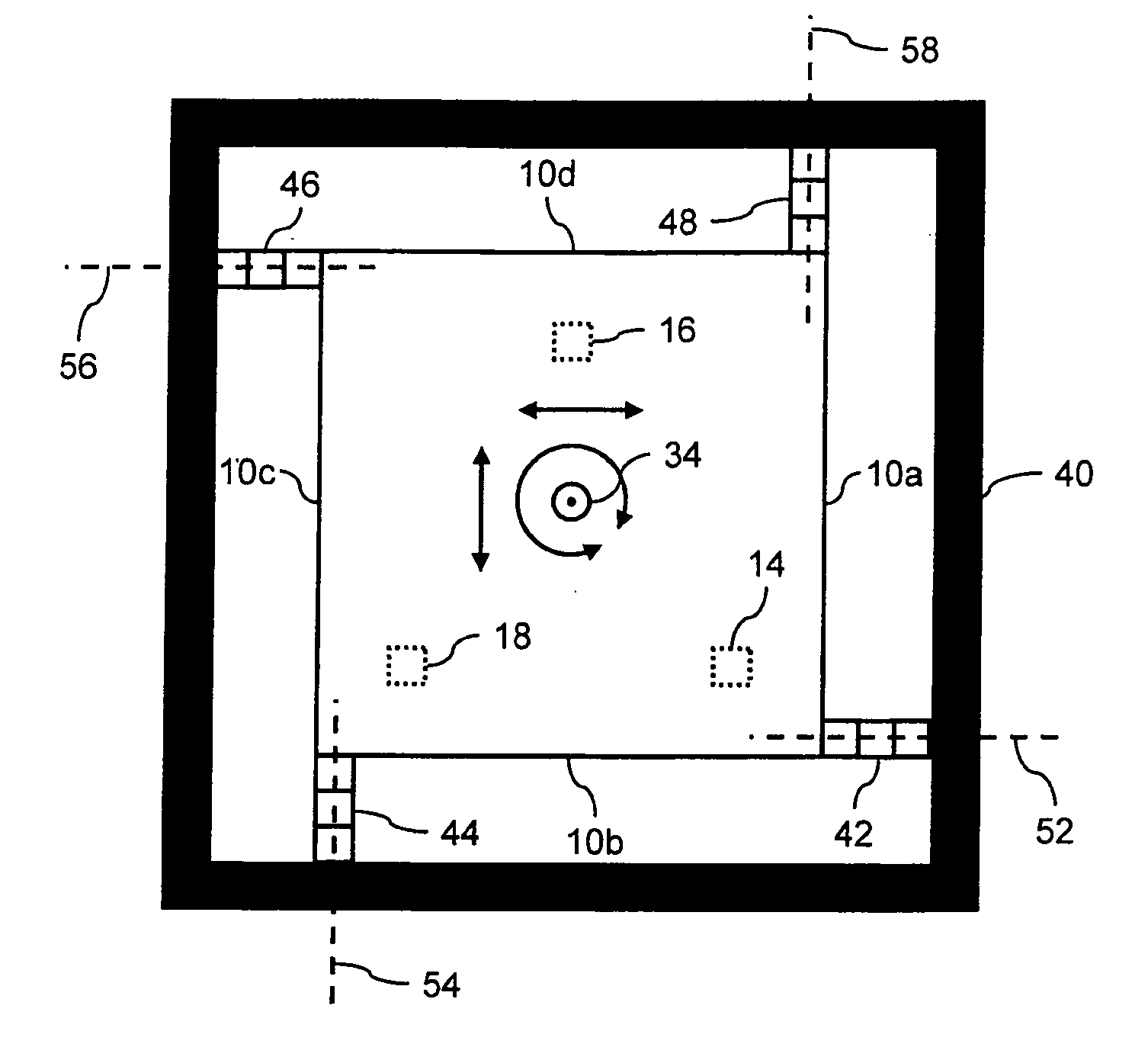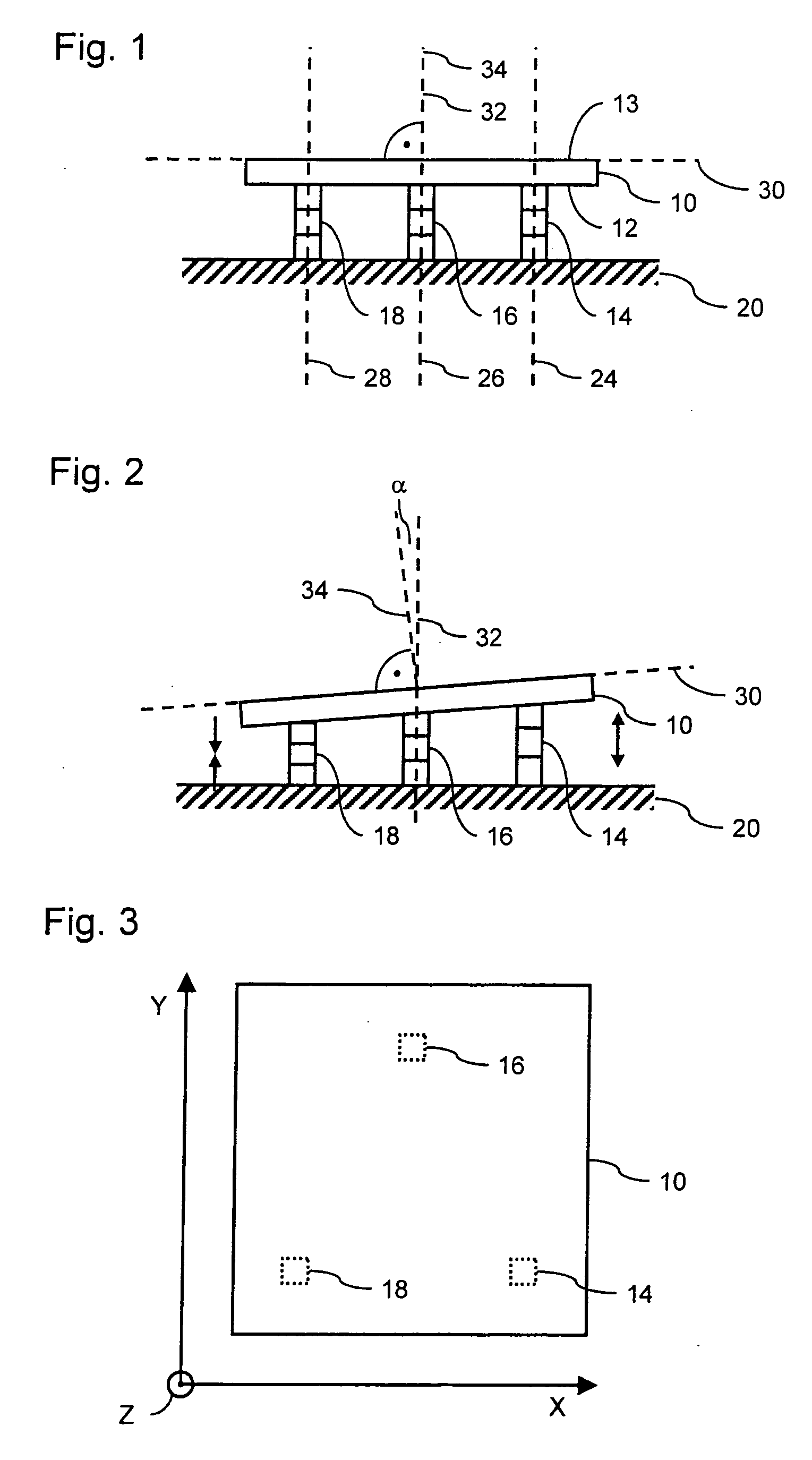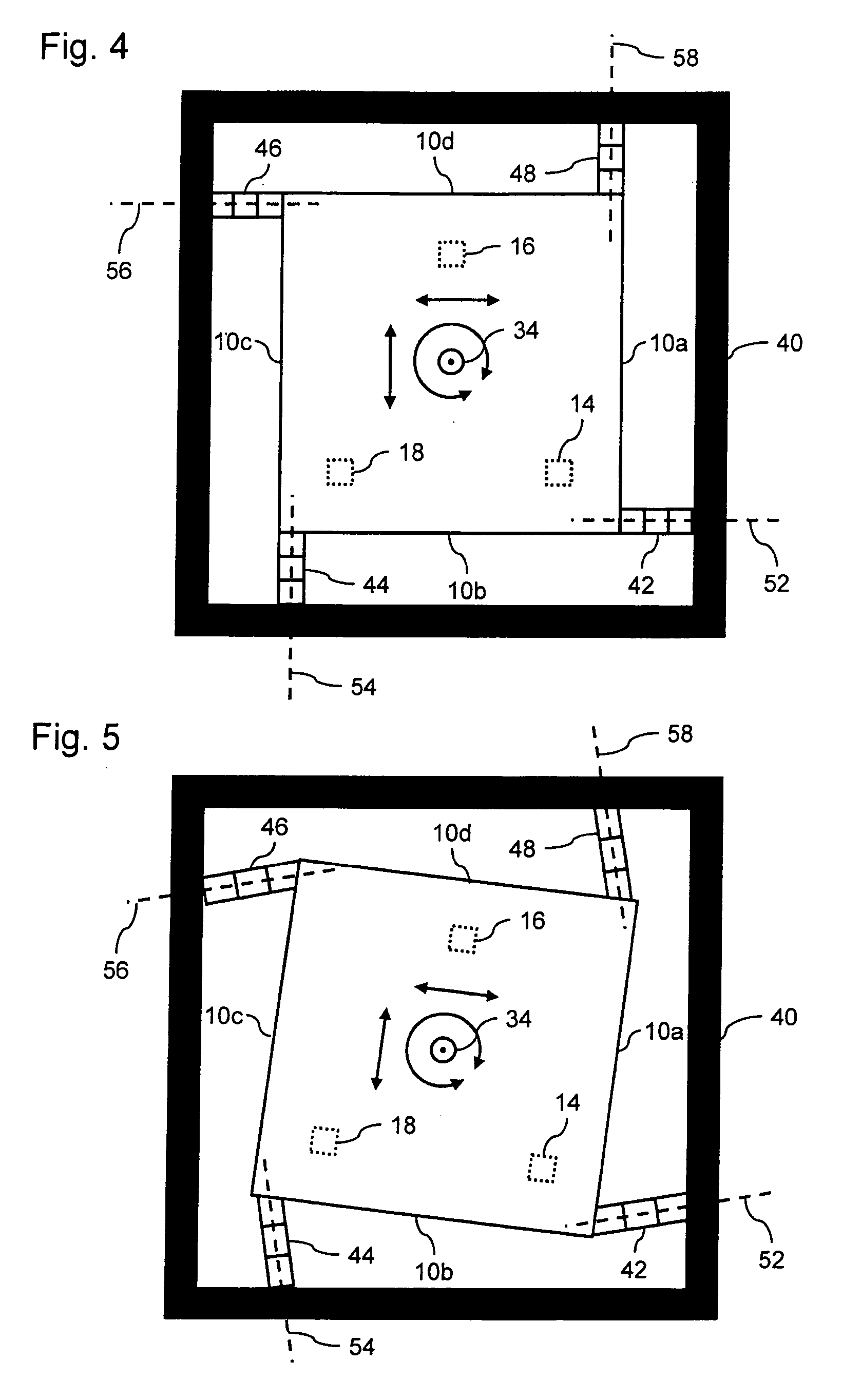Image stabilization device
a stabilization device and image technology, applied in the field of image stabilization devices, can solve the problems of difficult to hold the mobile phone still, the practical implementation involves some difficulties, and the camera system is becoming increasingly smaller and lighter, and achieves the effect of simple, inexpensive and compa
- Summary
- Abstract
- Description
- Claims
- Application Information
AI Technical Summary
Benefits of technology
Problems solved by technology
Method used
Image
Examples
Embodiment Construction
[0050]FIG. 1 shows an image recording sensor in the form of a CCD chip 10 having three actuators 14, 16, 18 arranged on and mounted to back side 12 thereof. Actuators 14, 16, 18 connect CCD chip 10 to a housing wall 20. Back side 12 is opposite the optically active front side 13 of CCD chip 10.
[0051] Micromechanical actuators 14, 16, 18 are formed by piezoelectric elements which each contract or expand along their longitudinal axes 24, 26, 28, which are perpendicular to image plane 30 of CCD chip 10, in order to tilt CCD chip 10 relative to the rest normal 32 of image plane 30. The integration of piezoelectric actuators 14, 16, 18 into CCD chip 10 on back side 12, as well as the attachment of the piezoelectric actuators of the second group to the side surfaces of CCD chip 10 permits inexpensive mass production. FIG. 1 shows the CCD chip in its rest position, in which it extends parallel to housing wall 20.
[0052] Referring to FIG. 2, CCD chip 10 is shown in a tilted position. In th...
PUM
 Login to View More
Login to View More Abstract
Description
Claims
Application Information
 Login to View More
Login to View More - Generate Ideas
- Intellectual Property
- Life Sciences
- Materials
- Tech Scout
- Unparalleled Data Quality
- Higher Quality Content
- 60% Fewer Hallucinations
Browse by: Latest US Patents, China's latest patents, Technical Efficacy Thesaurus, Application Domain, Technology Topic, Popular Technical Reports.
© 2025 PatSnap. All rights reserved.Legal|Privacy policy|Modern Slavery Act Transparency Statement|Sitemap|About US| Contact US: help@patsnap.com



